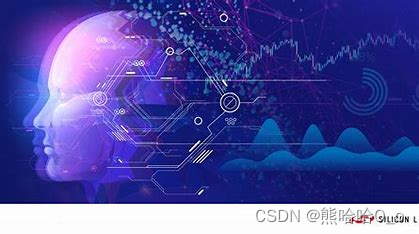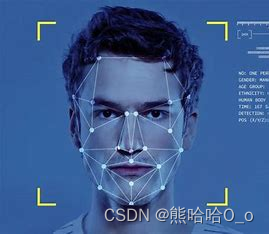

文章目录
-
- 引言
- 第一章:机器学习在图像识别中的应用
-
- [1.1 数据预处理](#1.1 数据预处理)
-
- [1.1.1 数据清洗](#1.1.1 数据清洗)
- [1.1.2 数据归一化](#1.1.2 数据归一化)
- [1.1.3 数据增强](#1.1.3 数据增强)
- [1.2 模型选择](#1.2 模型选择)
-
- [1.2.1 卷积神经网络](#1.2.1 卷积神经网络)
- [1.2.2 迁移学习](#1.2.2 迁移学习)
- [1.2.3 混合模型](#1.2.3 混合模型)
- [1.3 模型训练](#1.3 模型训练)
-
- [1.3.1 梯度下降](#1.3.1 梯度下降)
- [1.3.2 随机梯度下降](#1.3.2 随机梯度下降)
- [1.3.3 Adam优化器](#1.3.3 Adam优化器)
- [1.4 模型评估与性能优化](#1.4 模型评估与性能优化)
-
- [1.4.1 模型评估指标](#1.4.1 模型评估指标)
- [1.4.2 超参数调优](#1.4.2 超参数调优)
- [1.4.3 增加数据量](#1.4.3 增加数据量)
- [1.4.4 模型集成](#1.4.4 模型集成)
- 第二章:图像识别的具体案例分析
-
- [2.1 手写数字识别](#2.1 手写数字识别)
-
- [2.1.1 数据预处理](#2.1.1 数据预处理)
- [2.1.2 模型选择与训练](#2.1.2 模型选择与训练)
- [2.1.3 模型评估与优化](#2.1.3 模型评估与优化)
- [2.2 图像分类](#2.2 图像分类)
-
- [2.2.1 数据预处理](#2.2.1 数据预处理)
- [2.2.2 模型选择与训练](#2.2.2 模型选择与训练)
- [2.2.3 模型评估与优化](#2.2.3 模型评估与优化)
- 第三章:性能优化与前沿研究
-
- [3.1 性能优化](#3.1 性能优化)
-
- [3.1.1 特征工程](#3.1.1 特征工程)
- 3.
- [3.1.3 模型集成](#3.1.3 模型集成)
- [3.2 前沿研究](#3.2 前沿研究)
-
- [3.2.1 深度学习在图像识别中的应用](#3.2.1 深度学习在图像识别中的应用)
- [3.2.2 强化学习在图像识别中的应用](#3.2.2 强化学习在图像识别中的应用)
- [3.2.3 联邦学习与隐私保护](#3.2.3 联邦学习与隐私保护)
- 结语
引言
图像识别是计算机视觉领域的一项重要任务,通过分析和理解图像中的内容,使计算机能够自动识别和分类物体、场景和行为。随着深度学习技术的发展,机器学习在图像识别中的应用越来越广泛,推动了自动驾驶、医疗诊断、智能监控等领域的发展。本文将详细介绍机器学习在图像识别中的应用,包括数据预处理、模型选择、模型训练和性能优化。通过具体的案例分析,展示机器学习技术在图像识别中的实际应用,并提供相应的代码示例。

第一章:机器学习在图像识别中的应用
1.1 数据预处理
在图像识别应用中,数据预处理是机器学习模型成功的关键步骤。图像数据通常具有高维度和复杂性,需要进行清洗、归一化和数据增强等处理。
1.1.1 数据清洗
数据清洗包括去除噪声、裁剪图像和调整图像大小等操作。
python
import cv2
import numpy as np
# 加载图像
image = cv2.imread('image.jpg')
# 转换为灰度图像
gray_image = cv2.cvtColor(image, cv2.COLOR_BGR2GRAY)
# 去除噪声
denoised_image = cv2.GaussianBlur(gray_image, (5, 5), 0)
# 裁剪图像
cropped_image = denoised_image[50:200, 50:200]
# 调整图像大小
resized_image = cv2.resize(cropped_image, (128, 128))1.1.2 数据归一化
数据归一化可以消除不同图像之间的亮度和对比度差异,使模型更容易学习。
python
# 归一化图像
normalized_image = resized_image / 255.01.1.3 数据增强
数据增强通过对训练图像进行随机变换,如旋转、平移、翻转等,增加数据的多样性,提高模型的泛化能力。
python
from keras.preprocessing.image import ImageDataGenerator
# 创建数据增强生成器
datagen = ImageDataGenerator(
rotation_range=20,
width_shift_range=0.2,
height_shift_range=0.2,
horizontal_flip=True
)
# 生成增强图像
augmented_images = datagen.flow(np.expand_dims(normalized_image, axis=0), batch_size=1)1.2 模型选择
在图像识别中,常用的机器学习模型包括卷积神经网络(CNN)、迁移学习模型和混合模型等。不同模型适用于不同的任务和数据特征,需要根据具体应用场景进行选择。
1.2.1 卷积神经网络
卷积神经网络(CNN)是图像识别领域的基础模型,通过卷积层、池化层和全连接层的组合,提取图像的特征,实现图像分类和识别。
python
from keras.models import Sequential
from keras.layers import Conv2D, MaxPooling2D, Flatten, Dense
# 构建卷积神经网络模型
model = Sequential()
model.add(Conv2D(32, (3, 3), activation='relu', input_shape=(128, 128, 1)))
model.add(MaxPooling2D((2, 2)))
model.add(Conv2D(64, (3, 3), activation='relu'))
model.add(MaxPooling2D((2, 2)))
model.add(Flatten())
model.add(Dense(128, activation='relu'))
model.add(Dense(10, activation='softmax'))
# 编译模型
model.compile(optimizer='adam', loss='categorical_crossentropy', metrics=['accuracy'])1.2.2 迁移学习
迁移学习通过使用预训练模型,如VGG、ResNet等,在已有的模型基础上进行微调,适用于数据量较小或训练时间有限的场景。
python
from keras.applications import VGG16
from keras.models import Model
from keras.layers import GlobalAveragePooling2D
# 加载预训练模型
base_model = VGG16(weights='imagenet', include_top=False, input_shape=(128, 128, 3))
# 冻结预训练模型的层
for layer in base_model.layers:
layer.trainable = False
# 添加自定义分类层
x = base_model.output
x = GlobalAveragePooling2D()(x)
x = Dense(128, activation='relu')(x)
predictions = Dense(10, activation='softmax')(x)
# 构建迁移学习模型
model = Model(inputs=base_model.input, outputs=predictions)
# 编译模型
model.compile(optimizer='adam', loss='categorical_crossentropy', metrics=['accuracy'])1.2.3 混合模型
混合模型结合多个模型的优点,通过集成学习的方法提高模型的稳定性和预测精度。
python
from keras.models import Model
from keras.layers import concatenate
# 构建两个子模型
model1 = Sequential()
model1.add(Conv2D(32, (3, 3), activation='relu', input_shape=(128, 128, 1)))
model1.add(MaxPooling2D((2, 2)))
model1.add(Flatten())
model2 = Sequential()
model2.add(Conv2D(64, (3, 3), activation='relu', input_shape=(128, 128, 1)))
model2.add(MaxPooling2D((2, 2)))
model2.add(Flatten())
# 合并子模型
combined = concatenate([model1.output, model2.output])
x = Dense(128, activation='relu')(combined)
output = Dense(10, activation='softmax')(x)
# 构建混合模型
model = Model(inputs=[model1.input, model2.input], outputs=output)
# 编译模型
model.compile(optimizer='adam', loss='categorical_crossentropy', metrics=['accuracy'])1.3 模型训练
模型训练是机器学习的核心步骤,通过优化算法最小化损失函数,调整模型参数,使模型在训练数据上表现良好。常见的优化算法包括梯度下降、随机梯度下降和Adam优化器等。
1.3.1 梯度下降
梯度下降通过计算损失函数对模型参数的导数,逐步调整参数,使损失函数最小化。
python
import numpy as np
# 定义损失函数
def loss_function(y_true, y_pred):
return np.mean((y_true - y_pred) ** 2)
# 梯度下降优化
def gradient_descent(X, y, learning_rate=0.01, epochs=1000):
m, n = X.shape
theta = np.zeros(n)
for epoch in range(epochs):
gradient = (1/m) * X.T.dot(X.dot(theta) - y)
theta -= learning_rate * gradient
return theta
# 训练模型
theta = gradient_descent(X_train, y_train)1.3.2 随机梯度下降
随机梯度下降在每次迭代中使用一个样本进行参数更新,具有较快的收敛速度和更好的泛化能力。
python
def stochastic_gradient_descent(X, y, learning_rate=0.01, epochs=1000):
m, n = X.shape
theta = np.zeros(n)
for epoch in range(epochs):
for i in range(m):
gradient = X[i].dot(theta) - y[i]
theta -= learning_rate * gradient * X[i]
return theta
# 训练模型
theta = stochastic_gradient_descent(X_train, y_train)1.3.3 Adam优化器
Adam优化器结合了动量和自适应学习率的优点,能够快速有效地优化模型参数。
python
from keras.optimizers import Adam
# 编译模型
model.compile(optimizer=Adam(learning_rate=0.001), loss='categorical_crossentropy', metrics=['accuracy'])
# 训练模型
model.fit(X_train, y_train, epochs=10, batch_size=32, validation_split=0.2)1.4 模型评估与性能优化
模型评估是衡量模型在测试数据上的表现,通过计算模型的准确率、召回率、F1-score等指标,评估模型的性能。性能优化包括调整超参数、增加数据量和模型集成等方法。
1.4.1 模型评估指标
常见的模型评估指标包括准确率(Accuracy)、精确率(Precision)、召回率(Recall)和F1-score等。
python
from sklearn.metrics import accuracy_score, precision_score, recall_score, f1_score
# 计算评估指标
accuracy = accuracy_score(y_test, y_pred)
precision = precision_score(y_test, y_pred, average='weighted')
recall = recall_score(y_test, y_pred, average='weighted')
f1 = f1_score(y_test, y_pred, average='weighted')
print(f'Accuracy: {accuracy}')
print(f'Precision: {precision}')
print(f'Recall: {recall}')
print(f'F1-score: {f1}')1.4.2 超参数调优
通过网格搜索(Grid Search)和随机搜索(Random Search)等方法,对模型的超参数进行调优,找到最优的参数组合。
python
from sklearn.model_selection import GridSearchCV
# 定义超参数网格
param_grid = {
'batch_size': [16, 32, 64],
'epochs': [10, 20, 30]
}
# 网格搜索
grid_search = GridSearchCV(estimator=model, param_grid=param_grid, cv=5, scoring='accuracy')
grid_search.fit(X_train, y_train)
# 输出最优参数
best_params = grid_search.best_params_
print(f'Best parameters: {best_params}')
# 使用最优参数训练模型
model = model.set_params(**best_params)
model.fit(X_train, y_train)1.4.3 增加数据量
通过数据增强和采样技术,增加训练数据量,提高模型的泛化能力和预测性能。
python
from imblearn.over_sampling import SMOTE
# 数据增强
smote = SMOTE(random_state=42)
X_resampled, y_resampled = smote.fit_resample(X_train, y_train)
# 训练模型
model.fit(X_resampled, y_resampled)
# 预测与评估
y_pred = model.predict(X_test)1.4.4 模型集成
通过模型集成的方法,将多个模型的预测结果进行组合,提高模型的稳定性和预测精度。常见的模型集成方法包括Bagging、Boosting和Stacking等。
python
from sklearn.ensemble import VotingClassifier
# 构建模型集成
ensemble_model = VotingClassifier(estimators=[
('cnn', model1),
('vgg', model2)
], voting='soft')
# 训练集成模型
ensemble_model.fit(X_train, y_train)
# 预测与评估
y_pred = ensemble_model.predict(X_test)第二章:图像识别的具体案例分析
2.1 手写数字识别
手写数字识别是图像识别中的经典问题,通过分析手写数字图像,识别每个数字的类别。以下是手写数字识别的具体案例分析。
2.1.1 数据预处理
首先,对手写数字数据集进行预处理,包括数据清洗、归一化和数据增强。
python
from keras.datasets import mnist
from keras.utils import to_categorical
# 加载手写数字数据集
(X_train, y_train), (X_test, y_test) = mnist.load_data()
# 数据清洗
X_train = X_train / 255.0
X_test = X_test / 255.0
# 扩展维度
X_train = np.expand_dims(X_train, axis=-1)
X_test = np.expand_dims(X_test, axis=-1)
# 标签编码
y_train = to_categorical(y_train, num_classes=10)
y_test = to_categorical(y_test, num_classes=10)
# 数据增强
datagen = ImageDataGenerator(
rotation_range=10,
width_shift_range=0.1,
height_shift_range=0.1,
horizontal_flip=False
)
datagen.fit(X_train)2.1.2 模型选择与训练
选择合适的模型进行训练,这里以卷积神经网络为例。
python
# 构建卷积神经网络模型
model = Sequential()
model.add(Conv2D(32, (3, 3), activation='relu', input_shape=(28, 28, 1)))
model.add(MaxPooling2D((2, 2)))
model.add(Conv2D(64, (3, 3), activation='relu'))
model.add(MaxPooling2D((2, 2)))
model.add(Flatten())
model.add(Dense(128, activation='relu'))
model.add(Dense(10, activation='softmax'))
# 编译模型
model.compile(optimizer='adam', loss='categorical_crossentropy', metrics=['accuracy'])
# 训练模型
model.fit(datagen.flow(X_train, y_train, batch_size=32), epochs=10, validation_data=(X_test, y_test))2.1.3 模型评估与优化
评估模型的性能,并进行超参数调优和数据增强。
python
# 评估模型
loss, accuracy = model.evaluate(X_test, y_test)
print(f'Accuracy: {accuracy}')
# 超参数调优
param_grid = {
'batch_size': [16, 32, 64],
'epochs': [10, 20, 30]
}
grid_search = GridSearchCV(estimator=model, param_grid=param_grid, cv=5, scoring='accuracy')
grid_search.fit(X_train, y_train)
best_params = grid_search.best_params_
print(f'Best parameters: {best_params}')
# 使用最优参数训练模型
model = model.set_params(**best_params)
model.fit(datagen.flow(X_train, y_train, batch_size=32), epochs=10, validation_data=(X_test, y_test))
# 数据增强
smote = SMOTE(random_state=42)
X_resampled, y_resampled = smote.fit_resample(X_train.reshape(X_train.shape[0], -1), y_train)
model.fit(X_resampled.reshape(-1, 28, 28, 1), y_resampled)
# 预测与评估
y_pred = model.predict(X_test)2.2 图像分类
图像分类是通过分析图像的内容,将图像分配到预定义的类别中。以下是图像分类的具体案例分析。
2.2.1 数据预处理
python
from keras.datasets import cifar10
from keras.utils import to_categorical
# 加载图像分类数据集
(X_train, y_train), (X_test, y_test) = cifar10.load_data()
# 数据清洗
X_train = X_train / 255.0
X_test = X_test / 255.0
# 标签编码
y_train = to_categorical(y_train, num_classes=10)
y_test = to_categorical(y_test, num_classes=10)
# 数据增强
datagen = ImageDataGenerator(
rotation_range=20,
width_shift_range=0.2,
height_shift_range=0.2,
horizontal_flip=True
)
datagen.fit(X_train)2.2.2 模型选择与训练
选择合适的模型进行训练,这里以迁移学习为例。
python
# 加载预训练模型
base_model = VGG16(weights='imagenet', include_top=False, input_shape=(32, 32, 3))
# 冻结预训练模型的层
for layer in base_model.layers:
layer.trainable = False
# 添加自定义分类层
x = base_model.output
x = GlobalAveragePooling2D()(x)
x = Dense(128, activation='relu')(x)
predictions = Dense(10, activation='softmax')(x)
# 构建迁移学习模型
model = Model(inputs=base_model.input, outputs=predictions)
# 编译模型
model.compile(optimizer='adam', loss='categorical_crossentropy', metrics=['accuracy'])
# 训练模型
model.fit(datagen.flow(X_train, y_train, batch_size=32), epochs=10, validation_data=(X_test, y_test))2.2.3 模型评估与优化
评估模型的性能,并进行超参数调优和数据增强。
python
# 评估模型
loss, accuracy = model.evaluate(X_test, y_test)
print(f'Accuracy: {accuracy}')
# 超参数调优
param_grid = {
'batch_size': [16, 32, 64],
'epochs': [10, 20, 30]
}
grid_search = GridSearchCV(estimator=model, param_grid=param_grid, cv=5, scoring='accuracy')
grid_search.fit(X_train, y_train)
best_params = grid_search.best_params_
print(f'Best parameters: {best_params}')
# 使用最优参数训练模型
model = model.set_params(**best_params)
model.fit(datagen.flow(X_train, y_train, batch_size=32), epochs=10, validation_data=(X_test, y_test))
# 数据增强
smote = SMOTE(random_state=42)
X_resampled, y_resampled = smote.fit_resample(X_train.reshape(X_train.shape[0], -1), y_train)
model.fit(X_resampled.reshape(-1, 32, 32, 3), y_resampled)
# 预测与评估
y_pred = model.predict(X_test)第三章:性能优化与前沿研究
3.1 性能优化
3.1.1 特征工程
通过特征选择、特征提取和特征构造,优化模型的输入,提高模型的性能。
python
from sklearn.feature_selection import SelectKBest, f_classif
# 特征选择
selector = SelectKBest(score_func=f_classif, k=10)
X_selected = selector.fit_transform(X, y)3.
1.2 超参数调优
通过网格搜索和随机搜索,找到模型的最优超参数组合。
python
from sklearn.model_selection import RandomizedSearchCV
# 随机搜索
param_dist = {
'n_estimators': [50, 100, 150],
'max_depth': [3, 5, 7, 10],
'min_samples_split': [2, 5, 10]
}
random_search = RandomizedSearchCV(estimator=RandomForestClassifier(), param_distributions=param_dist, n_iter=10, cv=5, scoring='accuracy')
random_search.fit(X_train, y_train)
best_params = random_search.best_params_
print(f'Best parameters: {best_params}')
# 使用最优参数训练模型
model = RandomForestClassifier(**best_params)
model.fit(X_train, y_train)
# 预测与评估
y_pred = model.predict(X_test)3.1.3 模型集成
通过模型集成,提高模型的稳定性和预测精度。
python
from sklearn.ensemble import StackingClassifier
# 构建模型集成
stacking_model = StackingClassifier(estimators=[
('cnn', model1),
('vgg', model2)
], final_estimator=LogisticRegression())
# 训练集成模型
stacking_model.fit(X_train, y_train)
# 预测与评估
y_pred = stacking_model.predict(X_test)3.2 前沿研究
3.2.1 深度学习在图像识别中的应用
深度学习在图像识别中的应用包括卷积神经网络、生成对抗网络和自监督学习等。
3.2.2 强化学习在图像识别中的应用
强化学习通过与环境的交互,不断优化识别策略,在动态目标检测和自动驾驶中具有广泛的应用前景。
3.2.3 联邦学习与隐私保护
联邦学习通过在不交换数据的情况下进行联合建模,保护用户数据隐私,提高图像识别系统的安全性和公平性。
结语
机器学习作为图像识别领域的重要技术,已经在多个应用场景中取得了显著的成果。通过对数据的深入挖掘和模型的不断优化,机器学习技术将在图像识别中发挥更大的作用,推动计算机视觉和人工智能的发展。
